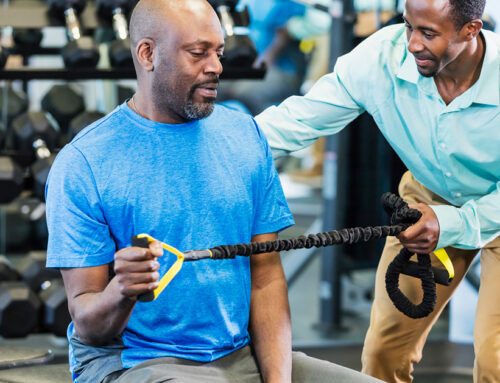Muscle Strains: Causes, Symptoms, Treatment, and Prevention
A muscle strain, commonly referred to as a pulled muscle, is a common injury that occurs when muscle fibers are overstretched or torn. Whether resulting from physical activity, sudden movements, or overuse, muscle strains can affect anyone, from athletes to sedentary individuals. The severity of muscle strains can range from mild to severe, with treatment and recovery varying accordingly. Understanding the causes, symptoms, treatment, and prevention of muscle strains can help individuals manage and reduce their risk of experiencing this injury.
Causes of Muscle Strains
Muscle strains are typically caused by overexertion or excessive force placed on a muscle during physical activity. Some common causes include:
Overuse: Repetitive motions, especially without proper rest, can lead to muscle fatigue and strain. Athletes, labourers, and individuals engaged in physically demanding activities are especially prone to this.
Sudden Movements: A sudden movement or change in direction, such as twisting or lifting a heavy object without proper technique, can put immense pressure on a muscle, causing it to stretch beyond its normal capacity.
Lack of Warm-up: Failing to properly warm up before engaging in physical activity can make muscles more susceptible to strain. Warming up gradually increases blood flow to the muscles, preparing them for the demands of exercise.
Weakness: Muscles that are weak due to lack of conditioning are more likely to become strained during physical activity. Improper technique can also increase the risk of strain.
Symptoms of Muscle Strains
The severity of muscle strain symptoms varies depending on the extent of the injury. Perhaps the most obvious symptom associated with a muscle strain is pain. This usually occurs at the site of the injury and can range in intensity. Using the muscle can reproduce the symptoms, and usually, it will be tender to touch. Swelling can occur but might be difficult to assess depending on the area of injury. Bruising will occur with more severe strains as the blood that leaks out will be visible through the skin. The area will feel stiff after a strain, often worsening after a day or two, and then it usually gets easier to move. Strains often alter the ability to recruit the damaged muscle fibres, so weakness is common. In short, the symptoms of muscle strain can be quite variable depending on the severity. Not surprisingly, the recovery period for muscle strains is also variable. Mild strains can recover within a few days, while severe strains can last four to six weeks in some cases.
Treatment of Muscle Strains
The treatment of muscle strains depends on the severity of the injury. The most obvious, pressing challenge is around how much to rest or how much pain to work through. In the past, we would completely immobilize severe strains and advise patients to stay inactive for a while. This advice isn’t as common nowadays. For mild strains, it can be helpful to keep the area moving. This area of recovery management is best done with the help of a professional like a chiropractor, physiotherapist or massage therapist. There is no “one size fits all” for these injuries, and management is individualized. At Burlington Sports Therapy we often use laser therapy for muscle strains to assist blood flow and cellular repair. Treatment can also include soft tissue therapy and guidance with respect to use, stretching and strengthening. Muscle strains always require some level of strengthening to get the area back to optimal function to prevent recurrence.
Prevention of Muscle Strains
While it may not always be possible to prevent muscle strains, there are several measures that can reduce the likelihood of injury. Preparing for a sporting event or workout takes time. Don’t rush your warm up! Dynamic stretching or light aerobic activity before exercise can prepare muscles for physical activity, while cooling down afterward helps the muscles relax and recover. As mentioned earlier, strength training helps build muscle strength and endurance, reducing the risk of strain. Adequate rest and recovery between exercise sessions is vital to avoid overuse injuries. This gives muscles the opportunity to repair and rebuild, reducing the risk of strain from excessive wear and tear.
Muscle strains are common injuries that can occur in individuals of all activity levels, from professional athletes to those leading more sedentary lifestyles. Understanding the causes, symptoms, treatment, and prevention strategies for muscle strains can help individuals recover more efficiently and reduce the likelihood of future injuries. By taking proper precautions, such as warming up before exercise, strengthening muscles, and using proper technique, individuals can stay active and healthy while minimizing the risks associated with muscle strains. At Burlington Sports Therapy, we diagnose and treat various muscle strains daily. If you’re unsure how to manage your condition, please give us a call; we can help!








